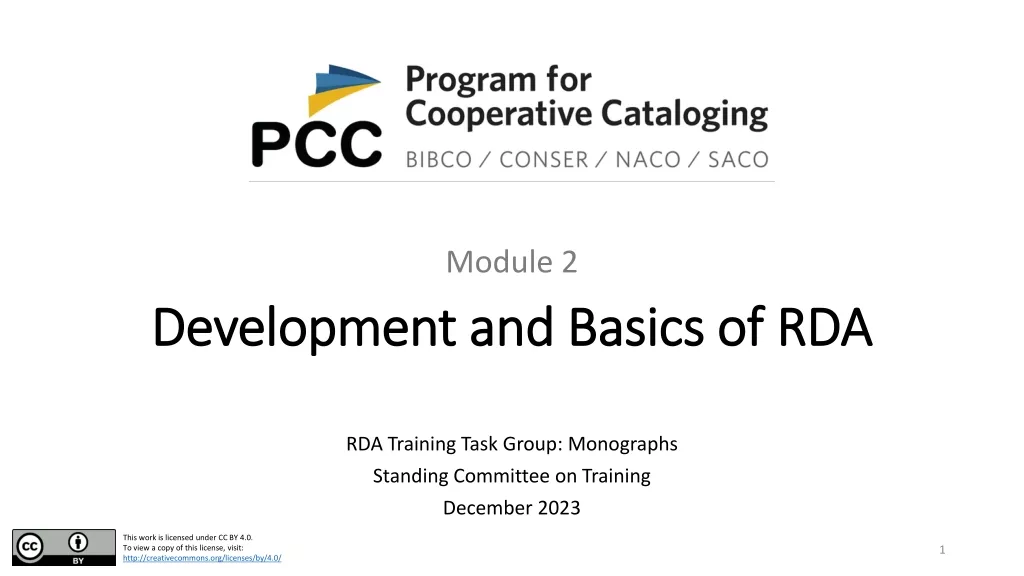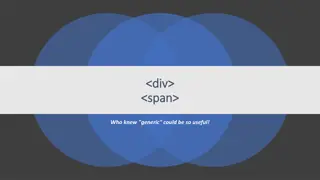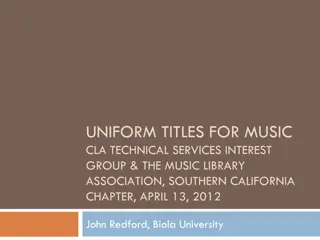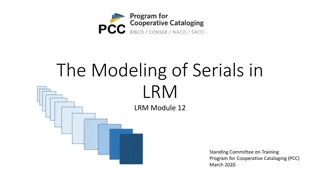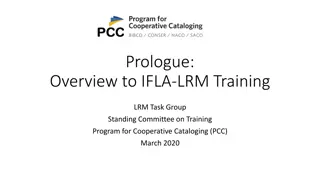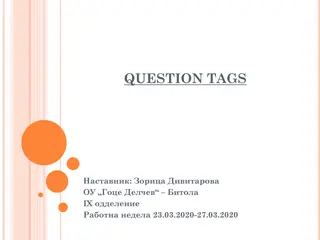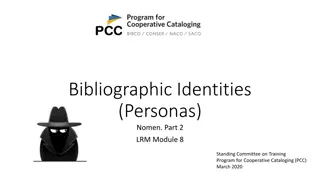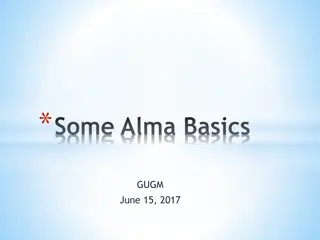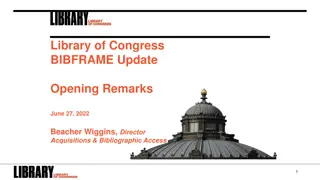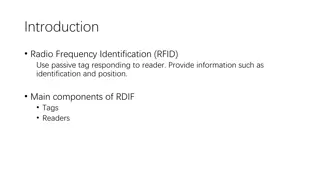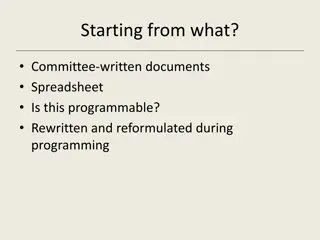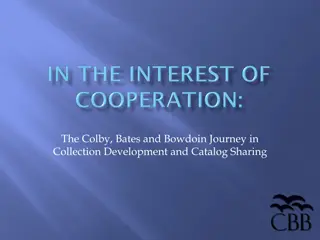Understanding MARC Tags 7XX, 8XX, 9XX in Library Cataloging
Learn about the application of MARC tags 7XX, 8XX, and 9XX in library cataloging. Explore how these tags are utilized for added entries, series data, and internal use within bibliographic records. Discover the significance of MARC tags 700-730 for establishing authorized access points, listing additional responsibilities, and incorporating corporate bodies.
Download Presentation

Please find below an Image/Link to download the presentation.
The content on the website is provided AS IS for your information and personal use only. It may not be sold, licensed, or shared on other websites without obtaining consent from the author. Download presentation by click this link. If you encounter any issues during the download, it is possible that the publisher has removed the file from their server.
E N D
Presentation Transcript
MARC Tags 7XX, 8XX, 9XX
How theyre used MARC tags 7XX Added entries Linking fields--serials MARC tags 8XX Series Holdings data Linking field for non-Latin scripts MARC tags 9XX Internal use
MARC tags 700-730Added entries Main vs added entry Every bib record has one main entry Is either a name (author, composer, performer, corporate body, etc.) or title (uniform title or title proper) Added entries establish authorized access points for: Creators that are not given main entry and/or Additional creators that contribute to the work (mixed/joint responsibility) Records may have multiple added entries
MARC tags 700-730Added entries Use to list additional responsibility or responsibility that cannot be given main entry Editors/compilers AACR more than three authors 245 $c record 1stauthor [et al.]. Record gets title main entry; 1stauthor given added entry Corporate bodies Limited instances where corporate body is given main entry See AACR 21.1B2 or RDA 19.2.1.1.1 Usually corporate bodies are added entries Exception: musical groups on musical sound recordings Videos production companies, publisher, distributor
Commonly used added entry fields 700 Added entry--Personal name (includes family names) 710 Added entry--Corporate name 711 Added entry--Meeting name 730 Added entry--Uniform title
MARC tag 700 Added entry--Personal name (includes family names) Illustrators, translators, inkers, colorists, readers of audiobooks, etc. Author/title entry for original work or related work Videos cast and crew
MARC tag 710 Added entry--Corporate name Corporate name not eligible for main entry Videos production companies, publisher, distributor
MARC codingIndicators and punctuation Indicators and punctuation in 700, 710, 711 are the same as in 100, 110, 111 Period or dash precedes subfield t in author/title entry; ending punctuation is period 700 1^ $aAusten, Jane,$d1775-1817.$tEmma. Comma or dash precedes subfield e; ending punctuation is period 710 2^ $aAcorn Media (Firm),$edistributor.
MARC tag 720 Added entry Uncontrolled name Often seen in level 3 records Name is entered without regard to established form of name Change to correct form and MARC coding when upgrading
MARC tag 720 MARC tag 720 is not indexed will not come up in a search
MARC tag 720 Corrected record
MARC tag 730Added entryuniform title Use for: Names of journals and newspapers Radio and television programs Motion pictures and videorecordings
MARC tag 740Uncontrolled related/analytical title Use for: Individual titles in a collection (sound recording, poems, etc.)
MARC tag 740Uncontrolled related/analytical title (cont.) Use for: Title(s) after the first title in the 245 in works by the same author without a collective title .
MARC codingIndicators and punctuation MARC tags 730/740 1st indicator non-filing characters Use 0 and omit initial articles 2nd indicator type of entry Usually blank in 730 2nd indicator 2 used most with 740 Use when the entry is contained in the work being described Ending punctuation for both is period (.)
MARC tags76X-78Xlinking fields Most commonly used with serials 780 Preceding entry In record for a serial that has a new title, links to preceding (old) title 2nd indicator provides more specific info 785 Succeeding entry In record for old title, links to succeeding (new) title 2nd indicator provides more specific info 787 Other relationship entry More complex relationships not covered under 780 or 785
OCLCInsert from Cited Record Function to complete MARC tag 780 or 785 in a Connexion record Steps: In the open record, add a blank line Enter MARC tag 780 or 785 with appropriate indicators Enter OCLC number of the related record With the cursor in the field, on the Edit menu, click Insert from Cited Record Appropriate subfields will be generated For use only with 760-787 fields
MARC tag 8XX MARC tags 8XX Series Holdings data Linking field for non-Latin scripts
MARC tags 800-830--Series Author/title series all works in the series by the same author 800 Series added entry--Personal name (includes family names) 810 Series added entry--Corporate name 811 Series added entry--Meeting name Title series works in the series are by different authors 830 Series added entry--Uniform title
MARC tags 84X-87XHoldings data Most commonly used is MARC tag 856 Electronic location and access Used for URL Related website Table of contents, publisher s description, author information Access for e-books 1st indicator Access method (4 for http) 2nd indicator Relationship No ending punctuation
MARC tag 880--Linking field for non-Latin scripts (OCLC view)
MARC tags 9XX Not part of the standard MARC21 format Created for: Use by the Library of Congress Internal use by OCLC Internal use by organizations SHARE policy: Delete all 9XX fields from Polaris records except: MARC tag 945 (OCLC DO NOT SET) MARC tag 970 (used in acquisitions module) Libraries using acquisitions delete when no longer needed
For more information-- MARC Coding OCLC Bibliographic Formats and Standards Through Connexion On OCLC website: www.oclc.org/bibformats/en.html MARC21 format for bibliographic data On Library of Congress website: www.loc.gov/marc/bibliographic Cataloging code AACR print RDA print or online: www.rdatoolkit.org


